Mexico City – Part 1

Mexico City – Part 2
Our summer 2021 vacation in Mexico City exceeded our expectations and left us wanting more which led to a second trip to this magical city the following April. The central take away from our first trip was that it is safe and a lot of fun to explore Mexico City with kids. In light of the fact that Europe remained relatively closed off to us due to pandemic restrictions, this was an opportune moment to expose our children, not once but twice, to the rich cultural traditions and fascinating histories of our illustrious neighbor in the south, Mexico City – a city that captured my heart over twenty years ago. Our second trip to Mexico City was preceded by a four night stay in Puebla de Zaragoza (the capital city of Puebla State). More to come in a later post.
My earlier post about Mexico City organizes the plenitude of history, art, culture and culinary delights of this sprawling city into efficient daily itineraries. This post is a supplement, focused primarily around our stay at the Gran Hotel Cuidad de Mexico in the Centro Histórico but also includes our day trip to the National Autonomous University of Mexico (UNAM). With the historical center as our home base, we had time to seek out more of the murals that this city is so famous for, visit other museums, and try out different restaurants, all within walking distance of our hotel.
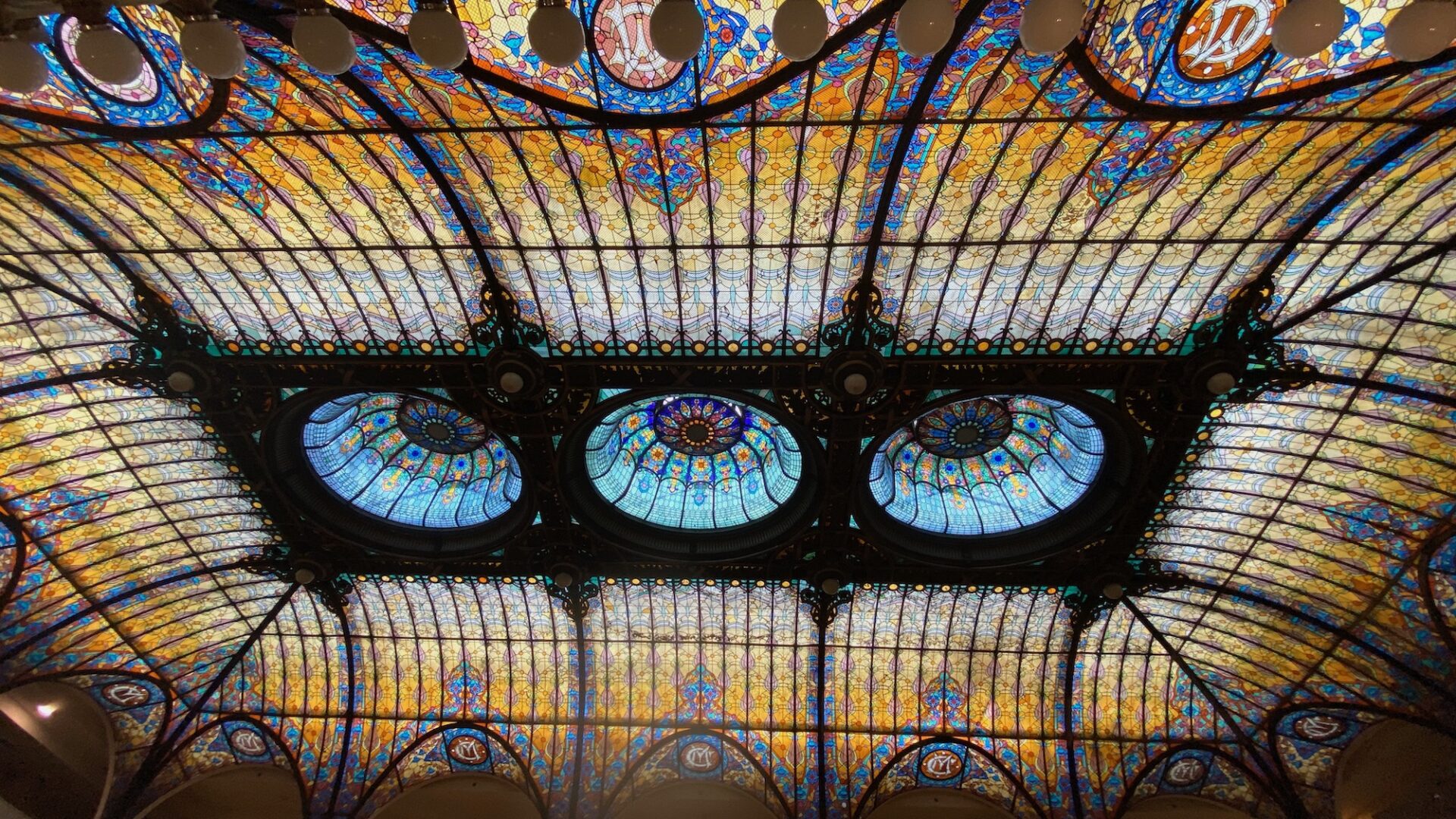
Centro Histórico vs Condesa
There are plenty of hip cafes, art galleries and other trendy places to check out in the Condesa, Roma and Polanco neighborhoods, however, they are at a considerable distance from the historical center of town. The Four Seasons Hotel Mexico City, which is in the vicinity of these neighborhoods and close to the Bosque de Chapultepec, was our home away from home when we first visited Mexico City. The Four Seasons was an all-around amazing experience and although we managed to cover a lot of ground, I felt that our time in the historical center was cut short which is why I chose to stay in the Centro Histórico for our second stay. Click here to learn more about our stay at the Four Seasons Hotel Mexico City.
The Gran Hotel Cuidad de Mexico is a historical landmark dating back to 1526. The iconic stained glass ceiling was installed in 1908 when this building functioned as a high-end department store, which it did until 1968 and was then converted into the five star hotel that it is today. The lobby is a breathtaking attraction known to many for we witnessed numerous tourists gaping at the epic ceiling of stained glass, old-fashioned elevators and the well-preserved elegance of a past era. Interesting side note, this location appeared in a montage of 1930s Paris in the film Frida (2002) that is based on the colorful life of the Mexican artist Frida Kahlo and staring Salma Hayek. Not surprising because this jewel-like and pristine interior transcends time and space, a testament to the cultural achievements of Mexico City, many that rival the most glamorous of Europe. From the lobby, to the sweeping views of the Zócalo from the rooftop restaurant/bar as well as from our spacious and comfortable family suite, Gran Hotel Ciudad de Mexico was a picturesque and lush experience. The customer service was top notch, there is an ATM on the premises and the rooftop restaurant/bar has a tasty and reasonably priced menu for when we wanted a meal with a view. For those who love history, art, architecture and a really nice and safe place to stay, Gran Hotel Cuidad de Mexico is the best.
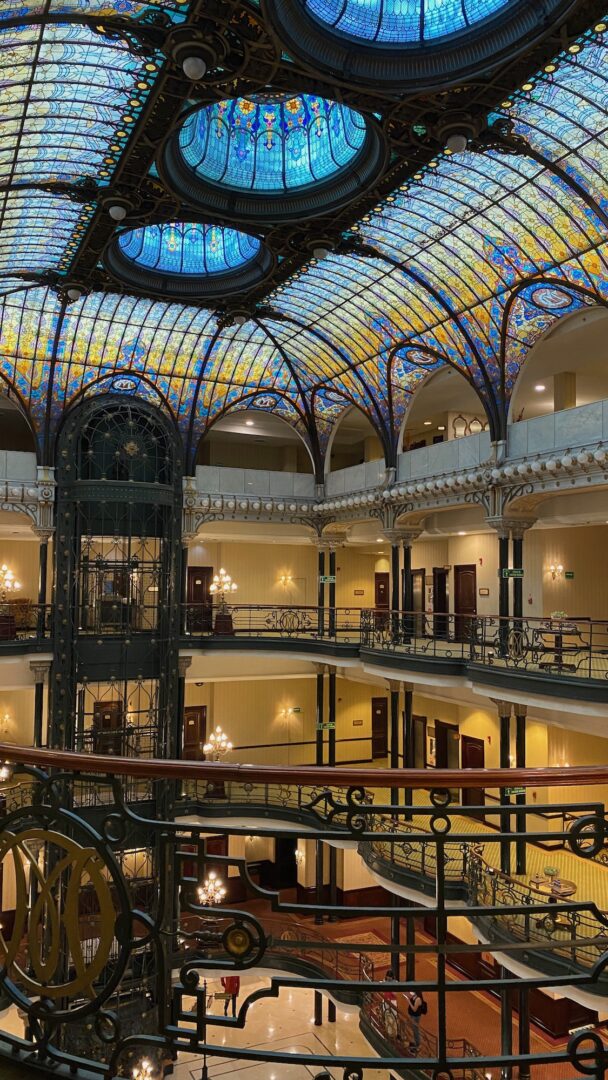
Murals of Mexico City
You have not experienced Mexico City unless you have traced the tremendous legacy left behind by the Mexican Muralists whose monumental masterpieces can be found all over the city. The murals of Diego Rivera, David Alfaro Siqueiros, José Clemente Orozco, Juan O’ Gorman, Rufino Tamayo and others were commissioned during the first half of the twentieth century to not only decorate colonial-era buildings throughout the city but to also educate the public. Created in the spirit of the Mexican Revolution (1910-1920), these murals are imbued with a deep sense of national pride that celebrates cultural traditions originating with the indigenous populations of this land but also critiques the violent history of colonialism in tandem with the politics of the time. Sadly, the murals by Diego Rivera in the National Palace remained closed to the public because the current president resides in the palace. Despite the disappointment of not gaining access to the National Palace during either of our visits to Mexico City, we were fortunate to have seen plenty of others just steps away from the palace.
In addition to the murals at the Palacio de Bellas Artes and Chapultepec Castle in Bosque de Chapultepec, here are some other places to see the world-renown murals of Mexico City.

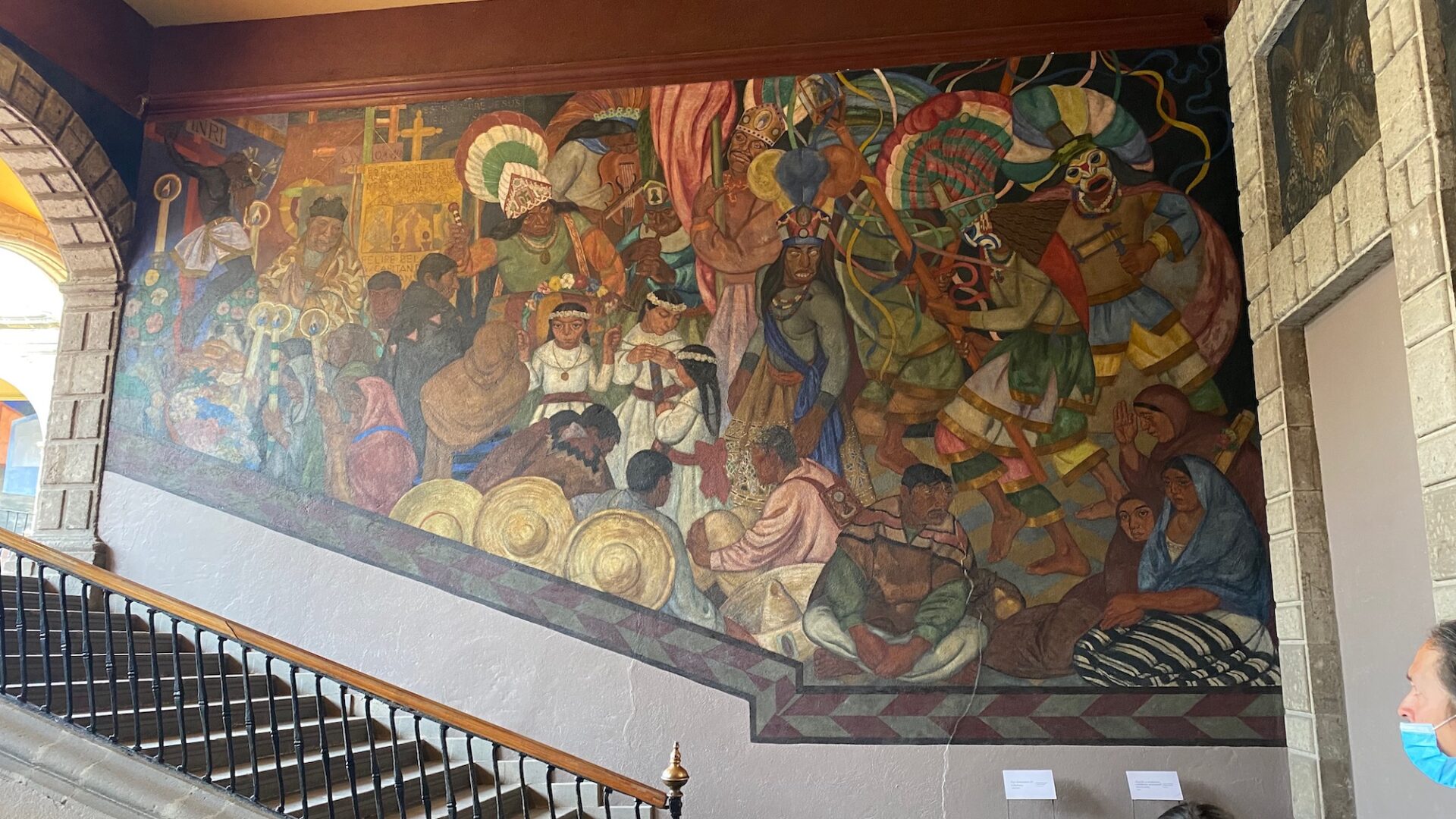
Colegio de San Ildefonso
The origins of the Colegio de San Ildefonso building in the Centro Histórico reaches back to 1583 when it was founded as a Jesuit college. In the 1860s, this building became the National Preparatory School and functioned in this capacity through the 1980s. It is currently open to the public as a cultural space showcasing its Baroque architecture and the magnificence of the murals that cover the walls of this historical landmark. During the 1920s, Diego Rivera, José Clemente Orozco, Jean Charlot, Fernando Leal, David Alfaro Siqueiros, Ramón Alva, and Fermín Revueltas were commissioned to fill the walls of this building with scenes depicting Mexican history from a renewed perspective following the Mexican Revolution (1910-1920). The walls of this colonial-era building present images of national pride, harsh critiques of Spanish colonialism and deep admiration for this nation’s indigenous past and cultural traditions. The juxtaposition of colonial architecture with anti-colonial imagery moving across the walls and stairways packs a powerful punch, even one hundred years later.
One of the most notable students to have attended the National Preparatory School was Frida Kahlo who was one of 35 young women admitted to this prestigious institution in the 1920s. Kahlo witnessed the Mexican Muralists at work while she was a student of this school and this is where she first met Diego Rivera (twenty years her senior). Kahlo was a silly school girl who delighted in playing pranks on the older and established artist, Rivera but she would later as an adult become his lover, wife and companion, a relationship that was turbulent, passionate and iconic.


Museo de Sitio de la Secretaria de Educatión Pública
Formerly the Convent of Santa María de la Encarnación del Divino Verbo, the building known today as the Museo de Sitio de la Secretaria de Educatión Pública continues the Mexican government’s directive of the 1920s to educate the masses with the murals of Diego Rivera, Jean Charlot, Amado de la Cueva and Roberto Montenegro. Another colonial-era building enriched with the work of the Mexican Muralists known to many through reproductions, it was an absolute wonder to walk the corridors and be immersed in art history. The cycle of paintings by Rivera consists of densely populated scenes, many of the figures based on the likeness of the artist’s family and friends, most notably the image of Frida Kahlo, who appears as the central figure of In The Arsenal, and is handing out weapons to those fighting for the rights of workers. This building is absolute treasure that should not be missed while exploring the Centro Histórico.
A photo ID is required to be left with the guard before entry which is free to the public.
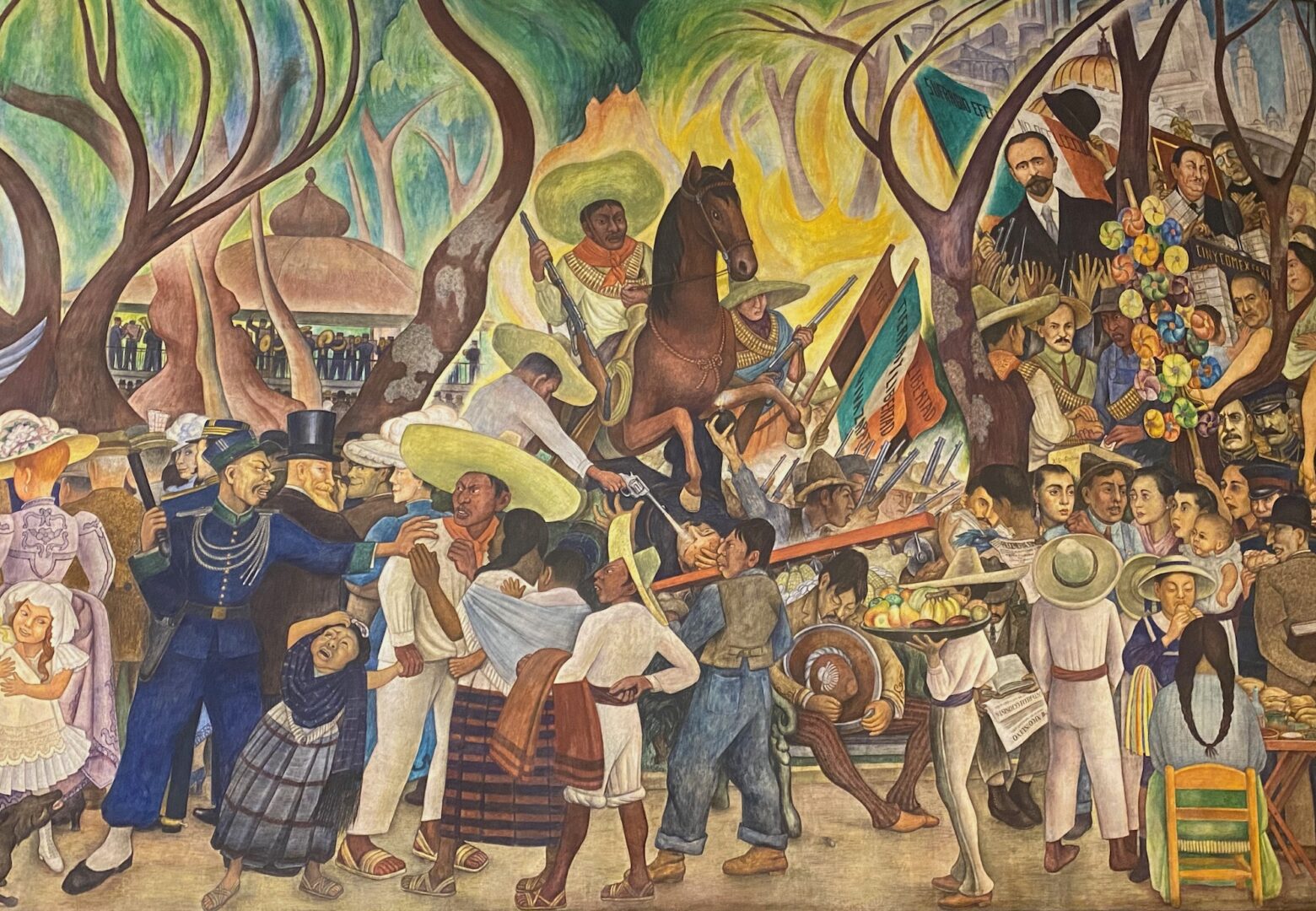
Museo Mural Diego Rivera
The Museo Mural Diego Rivera is a small museum next to Alameda Central Park that was built for the sole purpose of housing Diego Rivera’s mural Dream of A Sunday Afternoon in the Alameda Central (1947). This mural was originally located in the luxury Hotel del Prado, destroyed during the 1985 earthquake that devastated Mexico City. Miraculously, Rivera’s mural remained in tact and was able to be relocated to its newly constructed home in 1988. The history of Mexico is depicted from left to right and features over one hundred figures including Rivera as a child and his wife Frida Kahlo at the center of this mural.
This small museum is a quick but worthwhile stop along the way to Palacio de Bellas Artes, Palacio Postal and Museo Nacional De Arte (MUNAL) on the opposite side of Alameda Central Park.
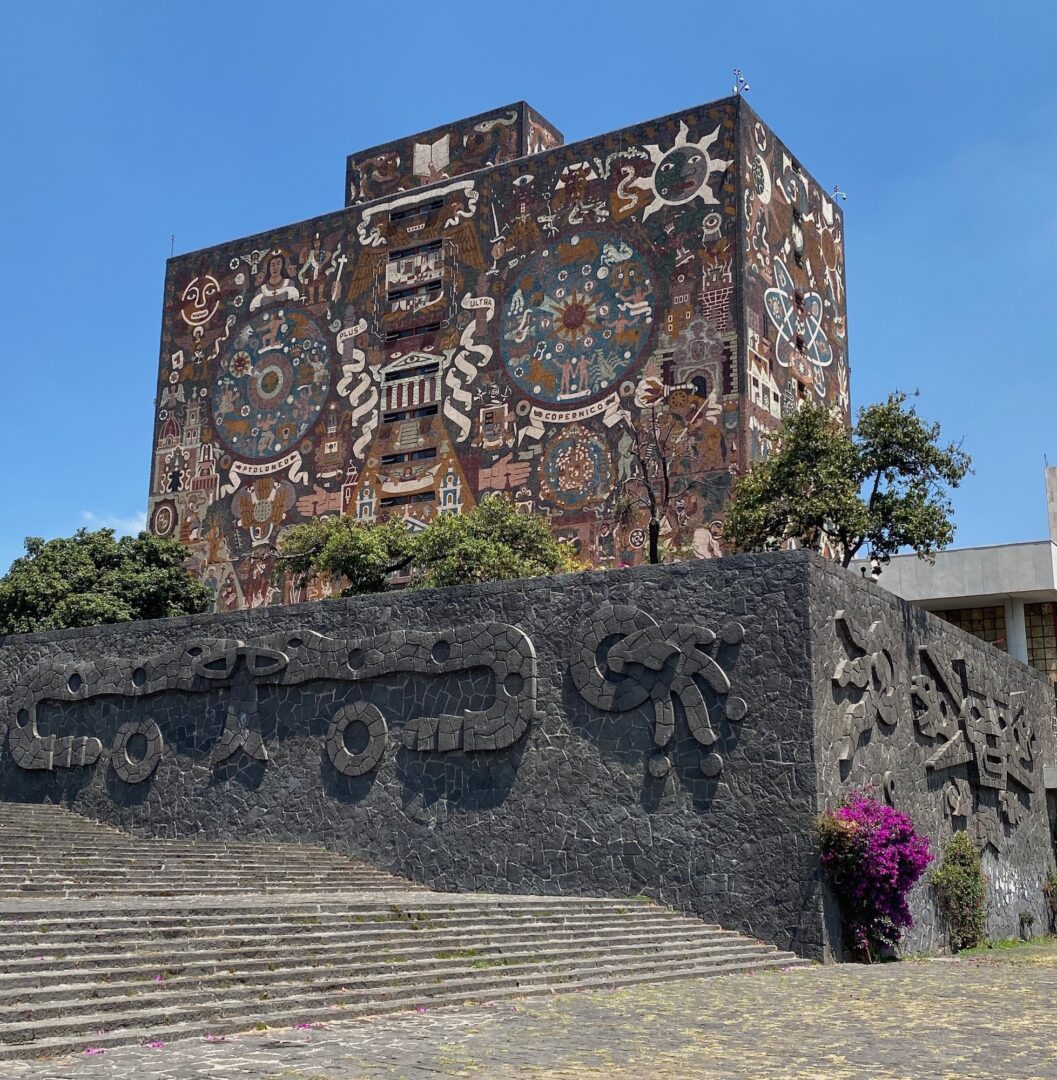
National Autonomous University of Mexico (UNAM)
The enormous campus of the National Autonomous University of Mexico (UNAM), a UNESCO World Heritage site, is an Uber or taxi ride away from the Centro Histórico and located just south of Coyoacán where the Museo Frida Kahlo (Casa Azul) and Museo Anahuacalli are located. The experience should start at the campus library that is engulfed by Juan O’Gorman’s monumental mosaic mural, “A Historical Representation of the Culture” (Representación histórica de la cultura). This phenomenal building as well as the others of this campus are the product of a mid-twentieth century collaboration between Mexican Muralists such as O’Gorman, Rivera, Siqueiros and architects in the construction of a self-contained universe of higher learning that integrated modern approaches to architectural forms with pre-colonial forms of expression. Within walking distance of O’Gorman’s library is the Rectory Tower featuring three murals by David Alfaro Siqueiros and the Estadio Olímpico Universitario (University Olympic Stadium), of 1968, where Diego Rivera’s massive mural of natural stones, The University, the Mexican family, peace and youth sports appears over an entrance to the stadium.
If arriving by car, make sure to be dropped off before entering a parking lot to avoid being turned away by campus security because the library’s parking lot as well as others around the campus are restricted to students and faculty.


More Museums
There is no shortage of museums in Mexico City and our first trip included visits to the Museo Nacional de Antropología, Museo Anahuacalli, Museo Frida Kahlo (Casa Azul) and Museum of Natural History inside Chapultepec Castle. Upon our return to this city, we managed to see the murals listed above but also find time to visit other museums.
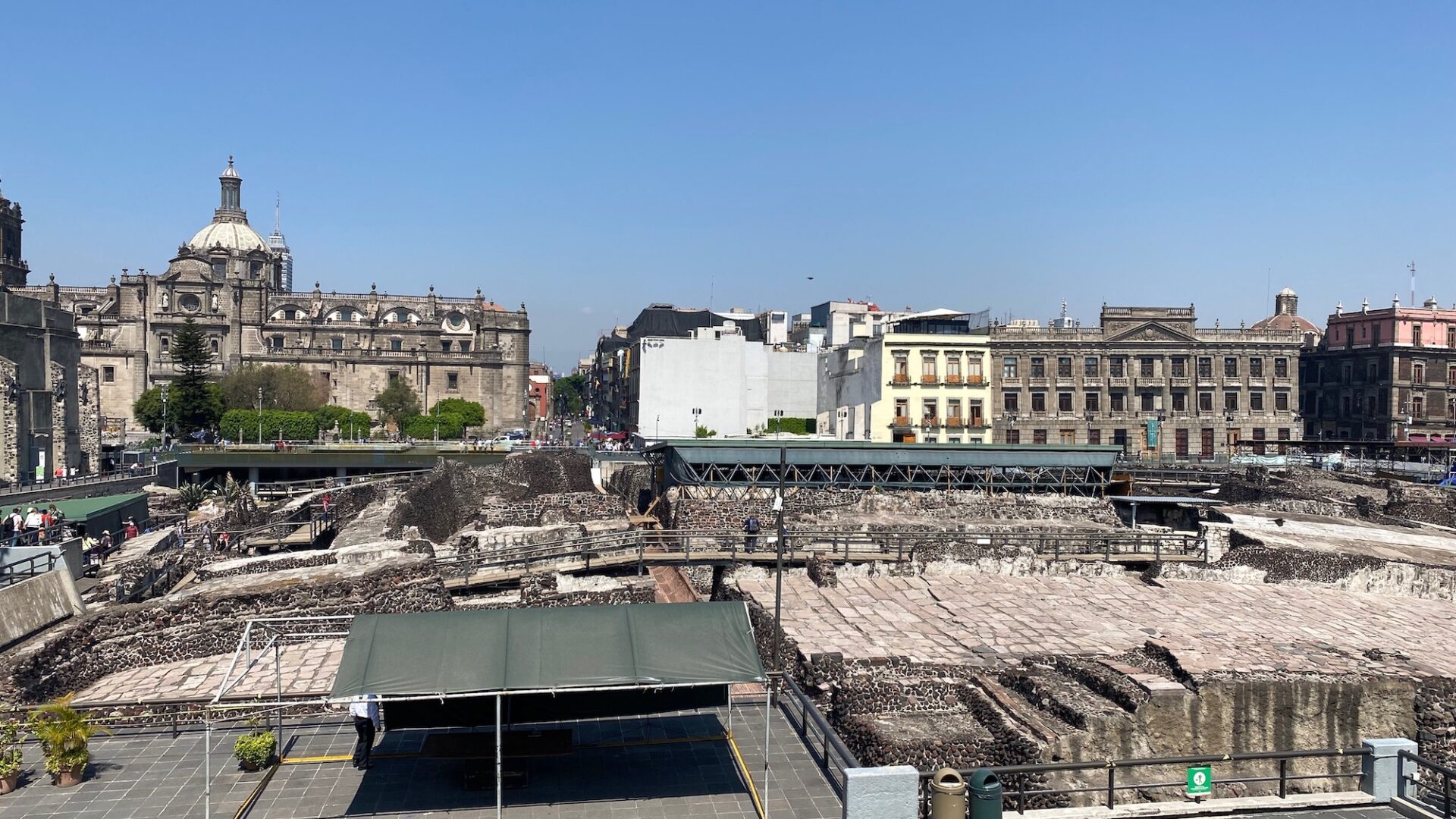
Museo del Templo Mayor
The remains of Temple Mayor, the sacred center of the Aztec city Tenochtitlan, sit along the perimeter of the Zócalo alongside the National Palace and perpendicular to the Metropolitan Cathedral. Temple Mayor exemplifies the reign of destruction that was brought upon Tenochtitlan by the Spanish Conquistadors upon the arrival of Hernan Cortéz in 1519. This archeological site is visible to passersby and this was sufficient during our first trip to Mexico City because we were pressed for time but since we had more time in the Centro Histórico our second time around, we decided to visit the museum that is connected to this archeological site. Entrance to this museum permits one to walk within the site allowing for closer views and different perspectives of this structure and the relationship to its surroundings. The museum itself is a smaller version of the Museo Nacional de Antropología with a primary focus on the objects, rituals, practices specific to the site of Tenochtitlan.
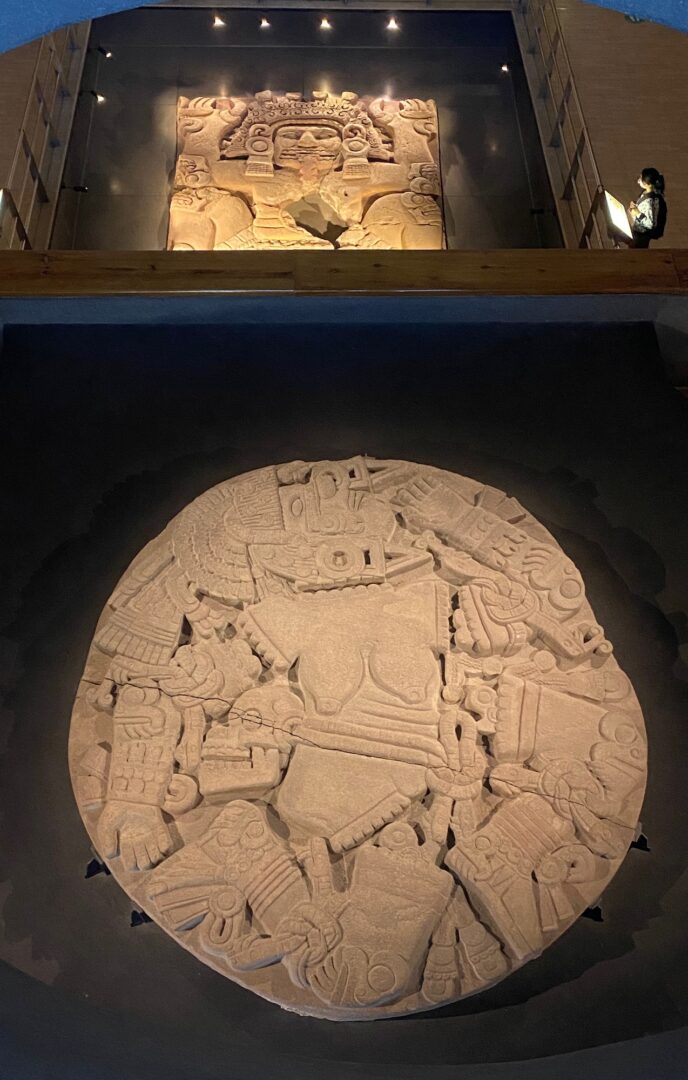
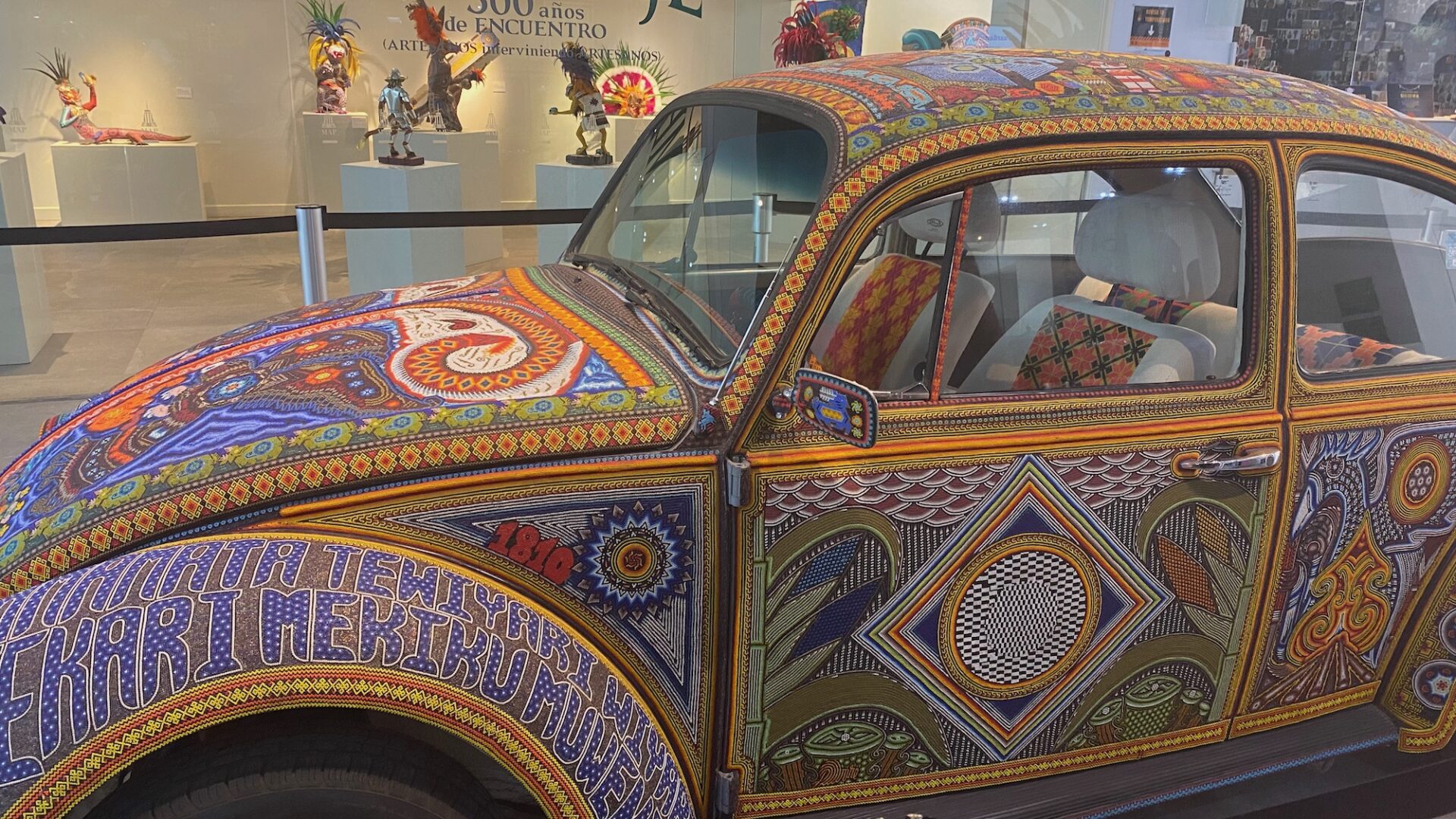
Museo de Arte Popular
The Museum de Arte Popular is devoted to the rich traditions of handicrafts and folk art that have persevered and evolved over the centuries. The playful and celebratory vibe of this building is evident from the start with the a beaded Volkswagen Beetle in the entrance, an atrium inhabited by fantastical and larger-than-life creatures made of paper mâché, colorful kites suspended from the ceiling and surrounded by galleries on several levels containing inventive installations of ritual masks and objects, traditional clothing, and more that make for a fun yet educational visit with the kids.
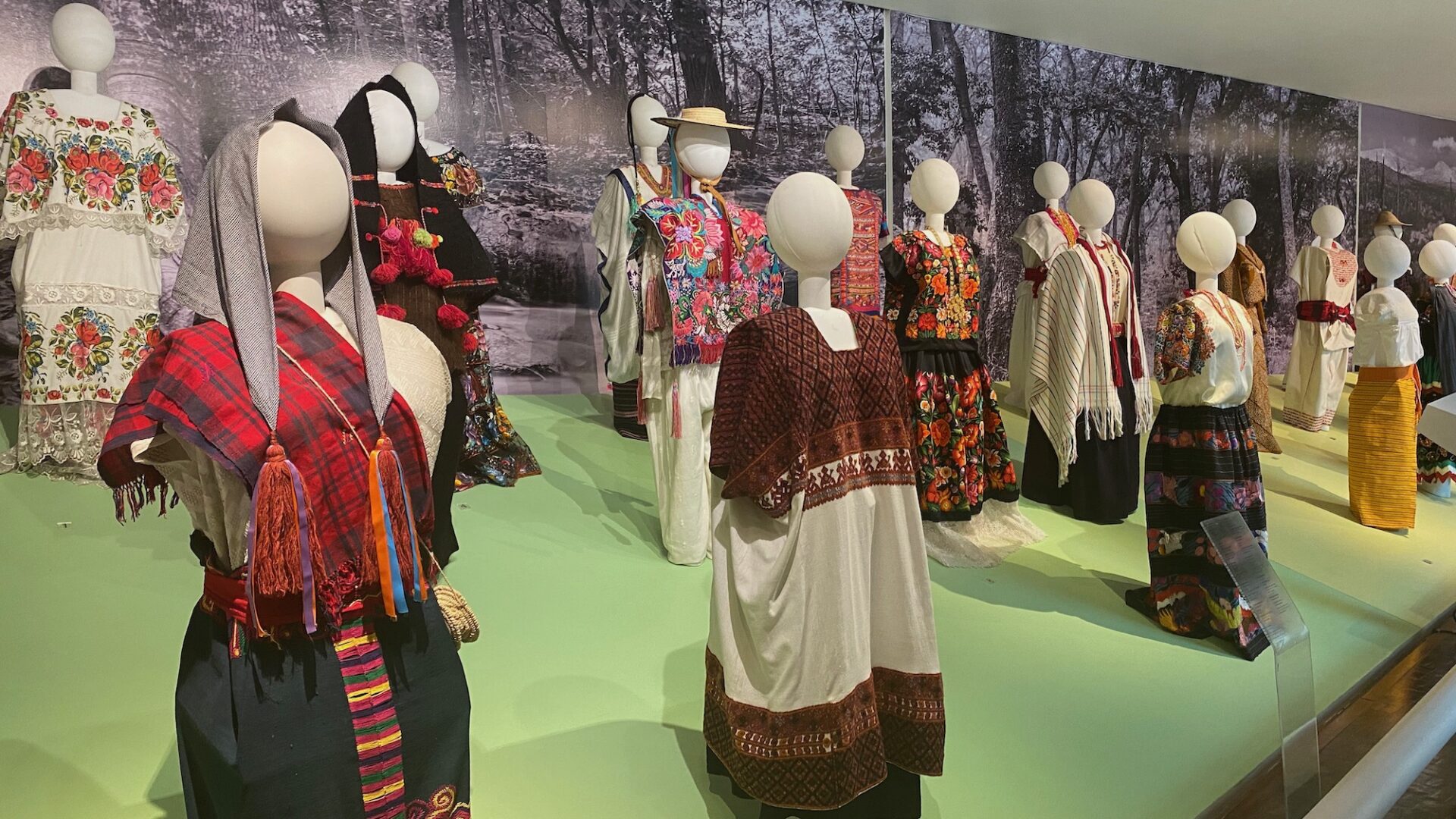
More Restaurants
Breakfast is an event not to be missed while in Mexico and we indulged in the coffee, hot chocolate, fresh bread, fresh pastries and traditional Mexican dishes to start the day. Our mornings of decadence were followed by lights lunches, usually tacos and churros along the way, and memorable dinners. Staying in the Centro Histórico was an opportune time to try out restaurants located in buildings that were historical landmarks. In some cases, the surroundings outdid the cuisine, but overall, they enhanced our time spent in Mexico City.
El Cardenal
El Cardenal is the place to experience breakfast while in Mexico City. This restaurant has several locations but the one on Palma Street in the historic center is the place to go. The demand is high on any day of the week so make sure to email the restaurant directly and reserve a table ahead of time because we saw a lot of people waiting for tables . The combination of the food and the ambiance of the historic French-style building that was restored in 1984 when El Cardenal took over this building. Another wonder of the Centro Histórico, this restaurant must be experienced at least once for breakfast.
Casa de los Azulejos (“House of Tiles”)
Casa de los Azulejos (“House of Tiles”) is along the pedestrian-only Avenida Francisco I. Madero and across the street from the Palacio de Bellas Artes. Talavera tiles from Puebla state cover the exterior of this historic 18th century building that was originally the home to an aristocratic family and later a workers’ organization but currently houses the Sanborns department store and chain restaurant owned by the Mexican billionaire Carlos Slim. There is plenty to admire about this building including the interior that is a continuation of beautifully installed tiles complimented in one stairwell by a massive mural by José Clemente Orozco. It is worth eating breakfast here at least once because the absolute beauty of this historical landmark compensates for the mediocre cuisine of a chain restaurant. The are plenty of tables across the first and second floors of this spacious building and thus little to no wait time for a table in the mornings.
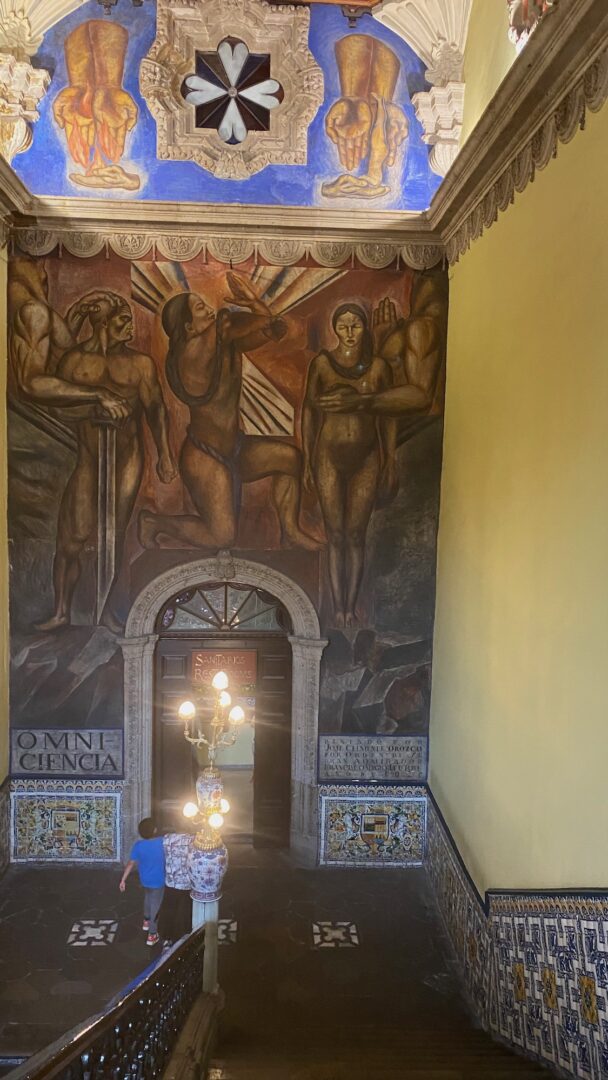
La Opera Bar

La Opera Bar in Centro Histórico is an excellent dinner option for its opulent interior that evokes the splendor of Paris on account of this restaurant was established by a pair of French sisters in 1976. It took over its current location in 1895 and has been serving French cuisine with a Mexican twist since to notable figures over the course of history including the Mexican revolutionary General Francisco Villa aka Pancho Villa. who left his mark with a bullet hole. La Opera is a cozy and welcoming place to have a casual dinner in the historical center of Mexico City.
Click here to read more about Mexico City
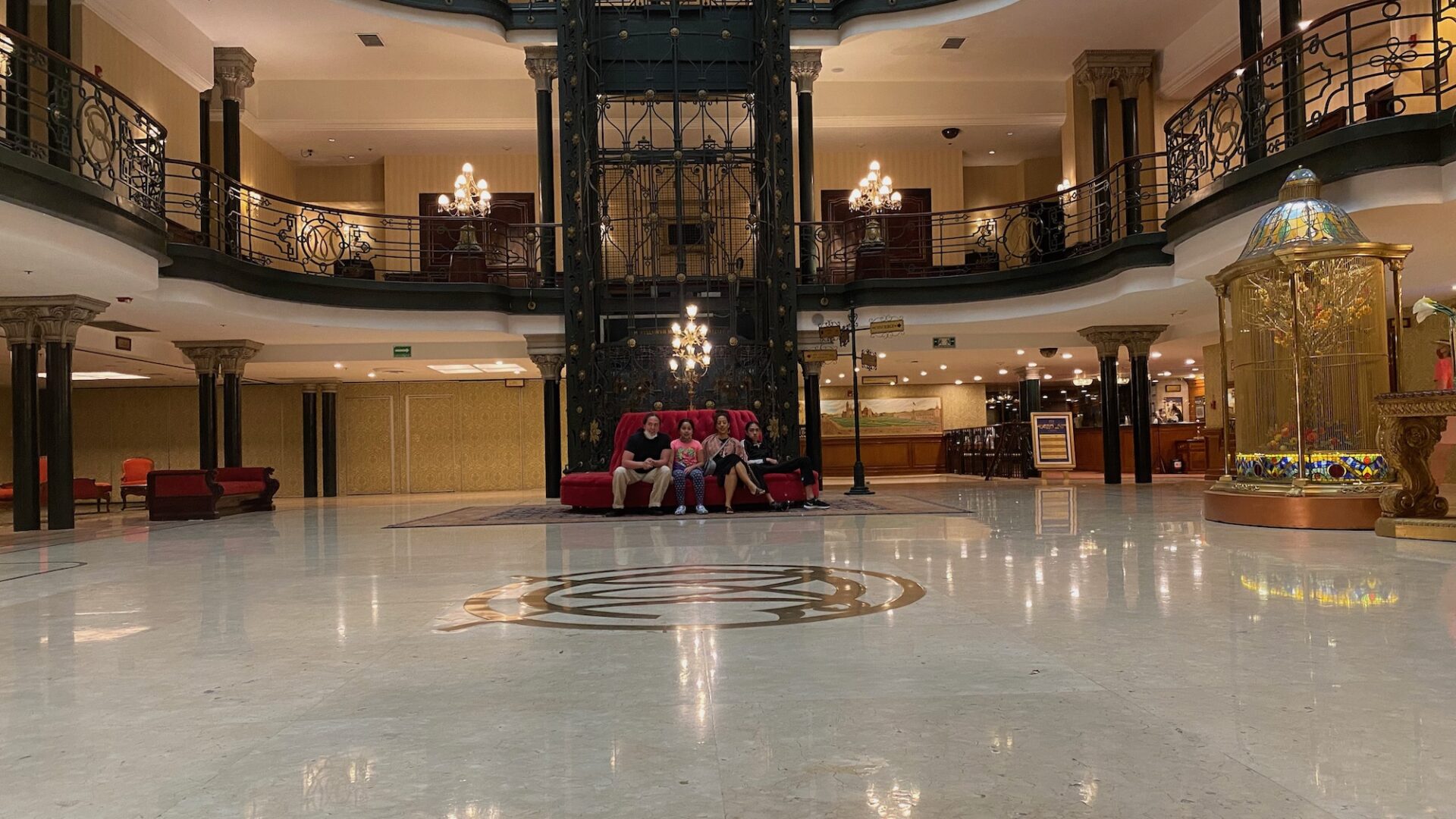
For more about family travel, local and abroad, click here.
For more posts about art around New York City and abroad click here.
Click here if you are looking for a little guidance planning your next vacation.





